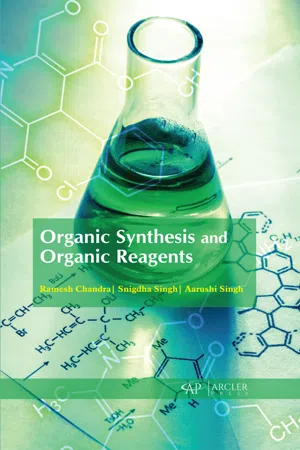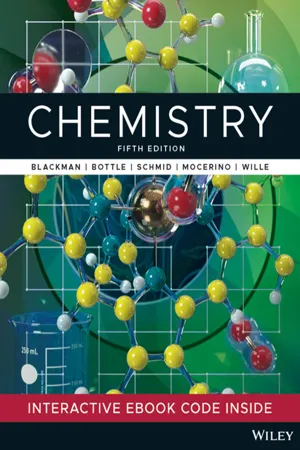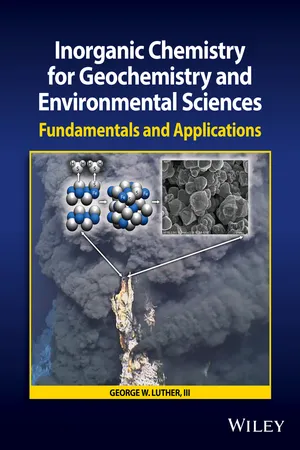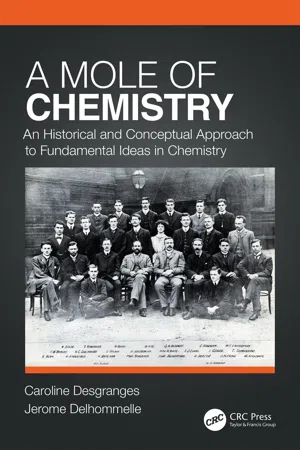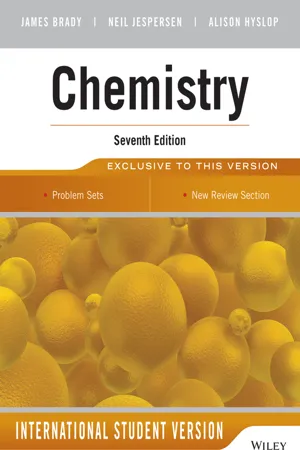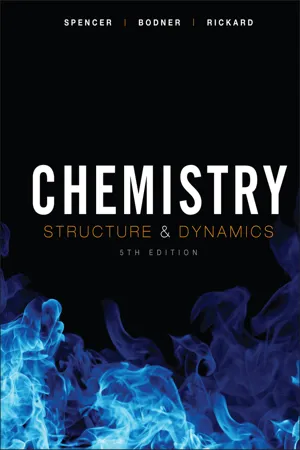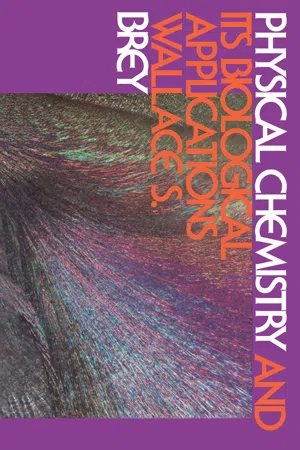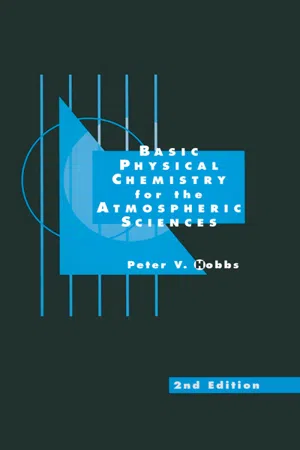Chemistry
Brønsted-Lowry Acids and Bases
Brønsted-Lowry acids are substances that donate protons, while Brønsted-Lowry bases are substances that accept protons. This definition of acids and bases is broader than the traditional Arrhenius definition, as it includes substances that do not necessarily produce hydrogen ions in water. According to the Brønsted-Lowry theory, an acid-base reaction involves the transfer of a proton from the acid to the base.
Written by Perlego with AI-assistance
Related key terms
1 of 5
12 Key excerpts on "Brønsted-Lowry Acids and Bases"
- eBook - PDF
- Ramesh Chandra, Snigdha Singh, Aarushi Singh(Authors)
- 2020(Publication Date)
- Arcler Press(Publisher)
The Bronsted-Lowry theory is a more practical definition, proficient enough to describe acid-base behavior under different circumstances. Irrespective of the solvent, a Bronsted-Lowry acid-base reaction usually arises whenever there is transfer of proton from one reactant to the other. 2.2.1. Key Takeaways: Bronsted-Lowry Acidse Theory 1. According to the Bronsted-Lowry theory, an acid is considered as a chemical species proficient enough to donate hydrogen cation a proton; 2. A base, in turn, is capable to receive a hydrogen or a proton ion in aqueous stion; and 3. Thomas Martin Lowry and Johannes Nicolaus Bronsted individually defined acids and bases this way in the year 1923, so the theory generally accepts both of their names. 2.2.2. Main Points of the Bronsted ry Theory 1. A Bronsted-Lowry acid is a chemical species that plays the role of donating a proton or hydrn cation. 2. A Bronsted-Lowry base, a chemical species should also capable enough to accept a proton. In other way, it is a species that carries a lone electron pair accessible tond to H + . 3. When a Bronsted-Lowry acid donates a proton, it then results in creating a conjugate base. There is formation of conjugate acid of a Bronsted-Lowry base when it starts accepting a proton. The molecular formula of the conjugate acid-base pair is as same as Acids, Bases, and Functional Group Exchange Reactions 35 the original acid-base pair, excluding the acid that has one more H + in comparison with the conate base. 4. Strong acids and bases can be defined as those compounds that entirely ionize in aqueous or water solution. Weak acids and bases only partseparate. 5. According to this theory, water is amphoteric in nature, which means it can act both a Bronsted-Lowry acid and Bronsted-Lowry base. 2.2.3. Example Identifying Bronsted-Lowry Acids and Bases In contrast with the Arrhenius acid and bases, it is possible to form a Bronsted-Lowry acid-base pairs without a reaction in aqueous solution. - eBook - PDF
- Allan Blackman, Steven E. Bottle, Siegbert Schmid, Mauro Mocerino, Uta Wille(Authors)
- 2022(Publication Date)
- Wiley(Publisher)
CHAPTER 11 Acids and bases 499 In other words, a Brønsted–Lowry acid will donate a proton to a Brønsted–Lowry base, which will accept it. From now on, we will refer to Brønsted–Lowry acids and bases simply as acids and bases. To illustrate the Brønsted–Lowry concept, let’s return to the example involving water that we introduced previously. We stated that water acted as both an acid and a base, and we can now explain this with reference to the Brønsted–Lowry definition. One water molecule acts as a proton donor, and is therefore an acid. This water molecule becomes OH - on the right-hand side of the equation. The other water molecule accepts the donated proton, and therefore acts as a base. This water molecule is converted to H 3 O + on the right-hand side of the equation. It is instructive to consider this reaction in terms of the structures shown in figure 11.3. FIGURE 11.3 A mechanistic view of the acid–base reaction of one water molecule with another + acid base H + H H H H H H O H O O O + – In order for H 2 O to act as an acid, it must, according to the Brønsted–Lowry definition, have a proton to donate. However, the mere presence of hydrogen atoms, which are potential protons, is not sufficient for a chemical species to act as an acid. For example, methane, CH 4 , contains four hydrogen atoms but shows essentially no acidic properties. For a hydrogen atom to be measurably acidic, it must be bound to another atom via an appreciably polar bond, and therefore acids tend to contain hydrogen atoms bound to group 16 or 17 elements. Figure 11.3 also shows that, for H 2 O to act as a base and accept the donated proton, it must have a lone pair of electrons to which the donated proton can covalently bond. The presence of one or more lone pairs is a prerequisite for a species to act as a base, but not all species containing lone pairs act as bases; for example, the chloride ion, Cl - , contains four lone pairs, but displays negligible basic properties. - eBook - PDF
- Edward J. Neth, Paul Flowers, Klaus Theopold, Richard Langley, William R. Robinson(Authors)
- 2019(Publication Date)
- Openstax(Publisher)
INTRODUCTION CHAPTER 14 Acid-Base Equilibria 14.1 Brønsted-Lowry Acids and Bases 14.2 pH and pOH 14.3 Relative Strengths of Acids and Bases 14.4 Hydrolysis of Salts 14.5 Polyprotic Acids 14.6 Buffers 14.7 Acid-Base Titrations Liquid water is essential to life on our planet, and chemistry involving the characteristic ions of water, H + and OH – , is widely encountered in nature and society. As introduced in another chapter of this text, acid-base chemistry involves the transfer of hydrogen ions from donors (acids) to acceptors (bases). These H+ transfer reactions are reversible, and the equilibria established by acid-base systems are essential aspects of phenomena ranging from sinkhole formation ( Figure 14.1) to oxygen transport in the human body. This chapter will further explore acid-base chemistry with an emphasis on the equilibrium aspects of this important reaction class. 14.1 Brønsted-Lowry Acids and Bases LEARNING OBJECTIVES By the end of this section, you will be able to: • Identify acids, bases, and conjugate acid-base pairs according to the Brønsted-Lowry definition • Write equations for acid and base ionization reactions • Use the ion-product constant for water to calculate hydronium and hydroxide ion concentrations • Describe the acid-base behavior of amphiprotic substances Figure 14.1 Sinkholes such as this are the result of reactions between acidic groundwaters and basic rock formations, like limestone. (credit: modification of work by Emil Kehnel) CHAPTER OUTLINE The acid-base reaction class has been studied for quite some time. In 1680, Robert Boyle reported traits of acid solutions that included their ability to dissolve many substances, to change the colors of certain natural dyes, and to lose these traits after coming in contact with alkali (base) solutions. - eBook - PDF
- David R. Klein(Author)
- 2021(Publication Date)
- Wiley(Publisher)
An understanding of the relevant reactions will lead to a greater appreci- ation of food chemistry. In this chapter, our study of acids and bases will serve as an introduction to the role of electrons in ionic reactions. An ionic reac- tion is a reaction in which ions participate as reactants, intermediates, or products. These reactions represent 95% of the reactions covered in this textbook. In order to prepare ourselves for the study of ionic reactions, it is critical to be able to identify acids and bases. We will learn how to draw acid-base reactions and to compare the acidity or basicity of compounds. These tools will enable us to predict when acid-base reactions are likely to occur and to choose the appropriate reagent to carry out any specific acid-base reaction. 3 94 CHAPTER 3 Acids and Bases DO YOU REMEMBER? Before you go on, be sure you understand the following topics. If necessary, review the suggested sections to prepare for this chapter. • Identifying Formal Charges (Sections 1.4 and 2.4) • Drawing and Interpreting Bond-Line Structures (Sections 1.6 and 2.2) • Identifying Lone Pairs (Section 2.5) • Drawing Resonance Structures (Section 2.10) Take the DO YOU REMEMBER? QUIZ in the online course to check your understanding. 3.1 Introduction to Brønsted-Lowry Acids and Bases This chapter will focus primarily on Brønsted-Lowry Acids and Bases. There is also a brief section dealing with Lewis acids and bases, a topic that will be revisited in Chapter 6 and subsequent chapters. The definition of Brønsted-Lowry Acids and Bases is based on the transfer of a proton (H + ). An acid is defined as a proton donor, while a base is defined as a proton acceptor. As an example, con- sider the following acid-base reaction: O Cl Cl Acid (proton donor) O Base (proton acceptor) H H H H H H + + - + In the reaction above, HCl functions as an acid because it donates a proton to H 2 O, while H 2 O functions as a base because it accepts the proton from HCl. - eBook - ePub
Inorganic Chemistry for Geochemistry and Environmental Sciences
Fundamentals and Applications
- George W. Luther, III(Authors)
- 2016(Publication Date)
- Wiley(Publisher)
Chapter 7 Acids and Bases 7.1 Introduction Acids and bases have been known since before Roman times, for their ability to transform a chemical substance into other chemical forms. For example, sulfuric acid (, oil of vitriol; vitriolic acid) could be produced by the aqueous oxidation of pyrite, which is a common mineral used for many purposes [1]. dehydrates sugar as well as metal hydrates with sometimes dramatic color changes, and also dissolves metals via redox reactions. It is normally the chemical that is produced and sold in greatest quantity in the world each year. The first base was called lye, which was obtained by leaching ashes with water producing potassium hydroxide solution. Lye is a common name for bases, which are used in a variety of purposes including wood degradation into paper or fibers and soap production. 7.2 Arrhenius and Bronsted–Lowry Definitions Common acids such as hydrochloric acid (HCl) and nitric acid were not formally prepared until about the 16th century, so formal definitions of acids and bases similar to bonding theories are relatively new. In 1884, Svante Arrhenius defined an acid as a chemical species that when dissolved in water produced the hydrogen ion,. Although useful, the definition is limited as it does not encompass a large variety of reactions and only considers water as solvent. In 1923, Brønsted and Lowry defined an acid and base reaction as one that involves a hydrogen ion transfer between two reactants. The acid is the hydrogen ion donor (the Brønsted acid) and the base is the hydrogen ion acceptor (the Brønsted base). This definition applies to all solvents and the gas phase. For example, the reaction between HCl and can occur in water as solvent or in the gas phase (an atmospheric reaction) and results in complete transfer to form the hydronium ion, - eBook - PDF
Chemistry
The Molecular Nature of Matter
- Neil D. Jespersen, Alison Hyslop(Authors)
- 2021(Publication Date)
- Wiley(Publisher)
A Brønsted–Lowry base is a proton acceptor. The heart of the Brønsted–Lowry concept of acids and bases is that acid–base reactions are proton transfer reactions. Accordingly, hydrogen chloride is an acid because when it reacts with ammonia, HCl molecules donate protons to NH 3 molecules. Similarly, ammonia is a base because NH 3 molecules accept protons. Even when water is the solvent, chemists use the Brønsted–Lowry definitions more often than those of Arrhenius. Thus, the reaction between hydrogen chloride and water to form hydronium ion (H 3 O + ) and chloride ion (Cl − ), another proton transfer reaction, is clearly a Brønsted–Lowry acid–base reaction. Molecules of HCl are the acid in this reaction, and water molecules are the base. HCl molecules collide with water molecules and protons transfer during the collisions. Water Chloride ion Hydrogen chloride Hydronium ion Collision of molecules permits proton transfer + - Conjugate Acids and Bases Let’s use the Brønsted–Lowry view to consider an acid–base reaction as a chemical equilib- rium, having both a forward and a reverse reaction. We first encountered a chemical equi- librium in a solution of a weak acid in Section 4.4. Now let’s use formic acid, HCHO 2 , as an example. Because formic acid is a weak acid, we represent its ionization as a chemical equi- librium in which water is not just a solvent but also a chemical reactant, a proton acceptor. 3 HCHO 2 (aq) + H 2 O H 3 O + (aq) + CHO 2 − (aq) In the forward reaction, a formic acid molecule donates a proton to the water molecule and changes to a formate ion, CHO 2 − (Figure 15.2a). Thus, HCHO 2 behaves as a Brønsted acid, NOTE Although the positive charge is shown on just one of the hydrogen atoms in NH 4 + , it is spread equally over all four hydrogen atoms. TOOLS Brønsted–Lowry definitions NOTE Again, in H 3 O + , the positive charge is spread equally over all three hydrogen atoms. - eBook - ePub
A Mole of Chemistry
An Historical and Conceptual Approach to Fundamental Ideas in Chemistry
- Caroline Desgranges, Jerome Delhommelle(Authors)
- 2020(Publication Date)
- CRC Press(Publisher)
This is an important result since, later on, H + is replaced by H 3 O + ! Because of the concomitance of the two proposals and their essentially equivalent conclusions, the overall theory is now called the Brönsted–Lowry theory. “The simplest and most adequate definition of acids and bases is given by the scheme A = B + H + where A and B represent acid and base respectively. This scheme indicates that an acid is defined as a substance, which is able to split off H + -ions simultaneously forming a base, and a base as a substance capable of uniting with H + -ions, thus forming an acid.” When the acid–base equilibrium occurs in water or in another solvent, the H + -ions are solvated. Specifically, in water, A + H 2 O = B + H 3 O +. This “is a double acid-basic equilibrium, A and H 3 O + acting as acids, B and H 2 O as bases”. Another consequence is that acids and bases can either be ions or neutral molecules. For instance, if the acid A is a neutral molecule like formic acid HCOOH, then the base B is an anion called formate anion HCCO −. The chemical equation is then HCOOH + H 2 O = HCCO − + H 3 O +. Indeed, the equation is balanced since there are 4H and 3O on both sides of the equation. The charges are also balanced (the neutrality is ensured on both sides). If the base B is now a neutral molecule such as methylamine CH 3 NH 2 then the acid A is, in this case, a cation called methylammonium cation CH 3 NH 3 +. Again, the chemical equation can be written as CH 3 NH 3 + + H 2 O = CH 3 NH 2 + H 3 O +. As we can see, the numbers of C, N and H are the same on both sides of the equation. Also, there is the same charge (+1) on either side of the equation. This means that, in the Brönsted–Lowry theory, an acid and a base work as a pair or, differently put, as conjugates. Indeed, the conjugate base of an acid is what is left after a proton has been removed from the acid. As an example, the acetate ion CH 3 COO − is the conjugate base of acetic acid CH 3 COOH - eBook - PDF
Chemistry
The Molecular Nature of Matter
- James E. Brady, Neil D. Jespersen, Alison Hyslop(Authors)
- 2014(Publication Date)
- Wiley(Publisher)
Acids and Bases, A Molecular Look Chapter Outline 15.1 | Brønsted–Lowry Acids and Bases 15.2 | Strengths of Brønsted–Lowry Acids and Bases 15.3 | Periodic Trends in the Strengths of Acids 15.4 | Lewis Acids and Bases 15.5 | Acid–Base Properties of Elements and Their Oxides 15.6 | Advanced Ceramics and Acid–Base Chemistry 15 731 Lisa Passmore The weather is hot, you are thirsty, and you would like a drink of cold water with a slice of lime. You pull out your ceramic knife, slice the fruit, pour the water, and add ice and the lime. After drinking, you feel much better. The lime added a slight acidity to the water, and helped quench your thirst. 732 Chapter 15 | Acids and Bases, A Molecular Look This Chapter in Context 15.1 | Brønsted–Lowry Acids and Bases In Chapter 4, an acid was described as a substance that produces H 3 O + in water, whereas a base gives OH - . An acid–base neutralization reaction, according to Arrhenius, occurs when an acid and a base combine to produce water and a salt. However, many reactions resemble neutralizations without involving H 3 O + , OH - , or even H 2 O. For example, when open bottles of concentrated hydrochloric acid and concentrated aqueous ammo- nia are placed side by side, a white cloud forms when the vapors from the two bottles mix (see Figure 15.1). The cloud consists of tiny crystals of ammonium chloride, which form when ammonia and hydrogen chloride gases, escaping from the open bottles, mix in air and react. NH 3 ( g) + HCl( g) h NH 4 Cl(s) What’s interesting is that this is the same net reaction that occurs when an aqueous solution of ammonia (a base) is neutralized by an aqueous solution of hydrogen chloride (an acid). Yet, the gaseous reaction doesn’t fit the description of an acid–base neutralization according to the Arrhenius definition because there’s no water involved. If we look at both the aqueous and gaseous reactions, they do have something in com- mon. - eBook - PDF
Chemistry
Structure and Dynamics
- James N. Spencer, George M. Bodner, Lyman H. Rickard(Authors)
- 2011(Publication Date)
- Wiley(Publisher)
To understand the implications of this definition, look at how the prototypical base, the OH ion, accepts a proton. The only way to accept an H ion is to form a covalent bond to it. In order to form a covalent bond to an H ion that has no valence electrons, the base must provide both of the electrons needed to form the covalent bond. Thus only com- pounds that have pairs of nonbonding valence electrons can act as H ion accep- tors, or Brønsted bases. The following compounds, for example, can all act as Brønsted bases because they all contain nonbonding pairs of electrons. The Brønsted model therefore includes within the category of bases any ion or molecule that contains one or more pairs of nonbonding valence electrons that can accept a proton. Many molecules and ions satisfy the definition of a Brønsted O O O A N H NH 3 H H O Q O O H H 2 O H O B S S S O S S O S S S CO 3 2− 2− O C D G H O OH O O O HO OH O O O H 2 PO 4 - (aq) + H 2 O(l) uv H 3 O + (aq) + HPO 4 2 - (aq) NH 4 + (aq) + OH - (aq) uv NH 3 (aq) + H 2 O(l) HCl(aq) + NH 3 (aq) ¡ Cl - (aq) + NH 4 + (aq) 11.3 THE BRØNSTED–LOWRY DEFINITION OF ACIDS AND BASES 471 base. However, the following substances are not Brønsted bases because they have no nonbonding valence electrons. A O O A C H H CH 4 H H H 2 O H H A O O A N H NH 4 H H H 472 CHAPTER 11 / ACIDS AND BASES E x e r c i s e 1 1 . 1 Identify the reactant that behaves as a Brønsted acid and the reactant that behaves as a Brønsted base in each of the following reactions. (a) (b) (c) Solution (a) acid: HF base: OH (b) acid: CH 3 CO 2 H base: H 2 O (c) acid: HNO 3 base: C 6 H 5 NH 2 C 6 H 5 NH 2 (aq) + HNO 3 (aq) uv C 6 H 5 NH 3 + (aq) + NO 3 - (aq) CH 3 CO 2 H(aq) + H 2 O(l) uv CH 3 CO 2 - (aq) + H 3 O + (aq) HF(aq) + OH - (aq) uv H 2 O(l) + F - (aq) 11.4 Conjugate Acid–Base Pairs An important consequence of the Brønsted theory is the recognition that acids and bases are linked or coupled to form conjugate acid–base pairs. - Wallace Brey(Author)
- 2012(Publication Date)
- Academic Press(Publisher)
Six Acid-Base Equilibria Many substances that are weak electrolytes are either weak acids or weak bases. In the process of ionization, a weak acid donates a proton— the nucleus of a hydrogen atom—to a solvent molecule, to form hydro-nium ion if the solvent is water, whereas a weak base such as am-monia produces hydroxide ions in aqueous solution by removing hydrogen ions from water molecules. These reactions have a feature in common: They are proton-transfer or proteolytic processes. Many important reactions occurring in chemical systems, including many taking place in living organisms, are protolytic reactions. Com-mon examples include the reaction of hydronium ion with hydroxide ion to form water, and the reaction of an amine with hydrochloric acid to form an amine hydrochloride. Proton transfers can also occur in the gas phase, as in the reaction of gaseous ammonia and gaseous hydro-gen chloride to form ammonium chloride. The common occurrence of protolytic reactions is in part a consequence of the fact that the proton is a constituent of the most common solvent, water, but it is probably principally a result of the fact that the hydrogen atom has no extra-nuclear electrons other than the valence electron. Thus, while the hy-drogen is bonded to one atom, a second atom can approach very closely to it, and the hydrogen atom can then easily transfer its attach-ment from the first atom to the second. 6-1 BRONSTED-LOWRY CONCEPT OF ACIDS AND BASES The scope of the idea of acid and base function has been extended—as proposed originally by Bronsted and by Lowry—to include all proton-transfer processes as acid-base reactions, with the proton donor participating as the acid and the proton acceptor participating as the base. Any species capable of being a proton donor, whether it be a ca- 182 SIX ACID-BASE EQUILIBRIA Table 6-1 Dissociation constants of conjugate acids and bases at 25°C Acid K Base H 3 0 + 5 5 .- Peter V. Hobbs(Author)
- 2000(Publication Date)
- Cambridge University Press(Publisher)
For example, HCl reacts with pure liquid ammonia HCl(aq) + NH 3 (1) <=* NHJ (aq) + Cr(aq) (5.6) Since NH 3 has eliminated the acid HCl, we could consider NH 3 as a base. These problems with the Arrhenius theory led J. Br0nsted and T. Lowry to propose a more general view of acids and bases, in which acids tend to donate protons and bases tend to accept protons. From this view- Strengths of acids and bases; acid-dissociation constant 87 point, in both Reactions (5.5) and (5.6) HC1 acts as an acid, and H 2 O in Reaction (5.5) and NH 3 in Reaction (5.6) act as bases. As indicated by the two-way arrows in Reaction (5.5), H 3 O + (aq) may donate a proton and Cl~(aq) may accept a proton. In this case, Cr(aq) is the base and H 3 O + (aq) the acid. Therefore, we could write HCl(aq) + H 2 O(1) <± H 3 O + (aq) + Cl (aq) acid 1 + base 2 <=* acid 2 + base 1 (5.7) where, HCl(aq) and Cl(aq), which differ only by a proton, are called the conjugate acid-base pair for the forward reaction (indicated by 1), and H 3 O + (aq) and H 2 O(1) are the conjugate acid-base pair for the reverse reaction (indicated by 2). In Reaction (5.6), HC1 and Cl are the con-jugate acid-base pair for the forward reaction, and NHJ and NH 3 are the conjugate acid-base pair for the reverse reaction. 5.4 Strengths of acids and bases; acid-dissociation (or ionization) constant The Br0nsted-Lowry view of acids and bases suggests that the strengths of acids can be compared by measuring their relative tendencies to release a proton to a common base (taken to be water). Thus, if we rep-resent an acid by HA and consider its reaction with water HA(aq) + H 2 O(1) <± H 3 O + (aq) + A(aq) (5.8) we can measure the strength of HA by the equilibrium constant for the forward reaction of (5.8) [H 3 O+(aq)][A-(aq)] *•-PAM] (5 -9) K & is called the acid-dissociation (or ionization) constant for HA.- eBook - PDF
Introductory Chemistry
An Active Learning Approach
- Mark Cracolice, Edward Peters, Mark Cracolice(Authors)
- 2020(Publication Date)
- Cengage Learning EMEA(Publisher)
Copyright 2021 Cengage Learning. All Rights Reserved. May not be copied, scanned, or duplicated, in whole or in part. Due to electronic rights, some third party content may be suppressed from the eBook and/or eChapter(s). Editorial review has deemed that any suppressed content does not materially affect the overall learning experience. Cengage Learning reserves the right to remove additional content at any time if subsequent rights restrictions require it. 673 17.7 Predicting Acid–Base Reactions The ion HC 2 O 4 2 appears in both Active Examples 17.3 and 17.4, first as an acid and second as a base. It is the intermediate ion in the two-step ionization of oxalic acid, H 2 C 2 O 4 . The HC 2 O 4 2 ion is amphoteric. 17.7 Predicting Acid–Base Reactions Goal 9 Given the formulas of a potential Brønsted–Lowry acid and a Brønsted–Lowry base, write the equation for the possible proton transfer reaction between them. 10 Given a table of relative strengths of acids and bases and information from which a proton transfer reaction equation between two species in the table may be written, write the equation and predict the direction in which the reaction will be favored. A chemist likes to know if an acid–base reaction will occur when certain reactants are brought together. Obviously, there must be a potential proton source and pro- ton remover—there can be no proton transfer reaction without both. From there, the decision is based on the relative strengths of the conjugate acid–base pairs. The stronger acid and base are the most reactive. They do what they must do to behave as an acid and a base. The weaker acid and base are more stable—less reactive. It fol- lows that the stronger acid will always surrender a proton to the stronger base, yielding the weaker acid and base as favored species at equilibrium. Figure 17.9 summarizes the proton transfer from the stronger acid to the stronger base, from the standpoint of positions in Figure 17.8.
Index pages curate the most relevant extracts from our library of academic textbooks. They’ve been created using an in-house natural language model (NLM), each adding context and meaning to key research topics.
